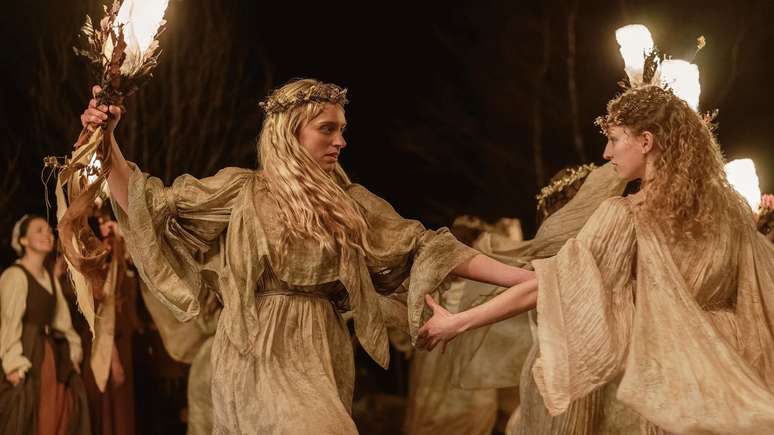If you watch a lot of horror films, you’ve probably come across titles that feature more graphic scenes of violence. These productions emphasize extreme violence, such as mutilations, lots of blood, and shocking and repulsive scenes. These characteristics are called “gore”.
Many films rely on this style, as it tends to please a significant portion of horror fans. However, these productions are not for everyone, as they require a strong stomach and nerves of steel.
But are you interested in finding out more about gore films? So read on, as we’ll explain more on the topic below.
The term “gore” refers to content that features explicit violence, such as blood, mutilation, or explicitly shocking scenes. The expression is not exclusive to cinema, but also applies to games, literature and other media that seek to have a strong visual impact.
Furthermore, “gore” can describe both the visual style and the presence of extreme and visceral elements. This feature is not limited to horror; Even action films, for example, can use it.
In cinema, gore is best understood as a style or narrative device rather than an independent subgenre. Subgenres like slasher AND body horror They often make use of gore, but have their own characteristics that go beyond this element.
Therefore, gore functions as an aesthetic tool used in different contexts and narrative genres to intensify visual impact.
Tracing the origin of the use of blood in cinema is an uncertain task, but experts believe that its aesthetic roots lie in the French theater “Grand Guignol”.

Founded in 1897 by Oscar Méténier, the “Grand Guignol” stood out in Paris for presenting works of extreme horror, with realistic scenes of violence, blood and carnage, which was unusual for the time.
In cinema, historians highlight the first appearance of blood in the film “Intolerance” (1916), by DW Griffith. This silent epic film includes a sequence in which a spear is slowly plunged into a soldier’s stomach, causing blood to pour out.

Other Griffith films released later, as well as contemporary productions, featured moments of this type. However, gore became more common in cinema as the horror subgenre called “splatter” gained prominence.
“Splatter” emerged in the 1960s and became popular in the 1970s. One of the first films associated with the style was “Blood Feast” (1963), directed by Herschell Gordon Lewis.

A few years later, Italian cinema made a great contribution to the impact of the brilliant Lucio Fulci. Known as the “Godfather of Blood,” a title he shares with Herschell Gordon Lewis, Fulci immortalized gore cinema with works such as “Terror in the Dark” (1981).
Since then, gore has become strongly linked to horror cinema. The combination of this aesthetic and the genre attracted the attention of much of the public and continued to evolve with the emergence of new subgenres and trends over time.

Some horror subgenres with gore elements include:
The aforementioned subgenre, like Herschell Gordon Lewis films, which has evolved around the world over the years.
The Evolution of Splatter in the 21st Century These are those films with scenes of torture and extreme suffering, such as “The Hostel” (2005) and “Saw” (2004).

In the 80s, the famous slashers, with their killers who brutally kill their victims, were the main “home” of gore.
Famous subgenre featuring explicit violence and cannibalism in the form of the undead. “Night of the Living Dead” (1968), by George A. Romero, was the film that shaped the way we know the subgenre.

Explore grotesque mutations and bodily degradation, as in “The Fly” (1986), by David Cronenberg, and “The Substance” (2024).
Popular in the 1970s and 1980s, they generally focus on expeditions into remote territories, where explorers encounter cannibalistic tribes. They are characterized by extreme violence and, often, controversies involving actual animal abuse. “Cannibal Holocaust” (1980), by Ruggero Deodato, and “Cannibal Ferox” (1981) are examples.

21st century French movement combining graphic violence and psychological horror. Quite provocative and controversial, this movement explores, for example, explicit sexual violence. “Mártires” (2008) and “Alta Tensão” (2003) are some examples.
The post What are Gore Films? appeared first on Olhar Digital.
Source: Olhar Digital
Rose James is a Gossipify movie and series reviewer known for her in-depth analysis and unique perspective on the latest releases. With a background in film studies, she provides engaging and informative reviews, and keeps readers up to date with industry trends and emerging talents.






